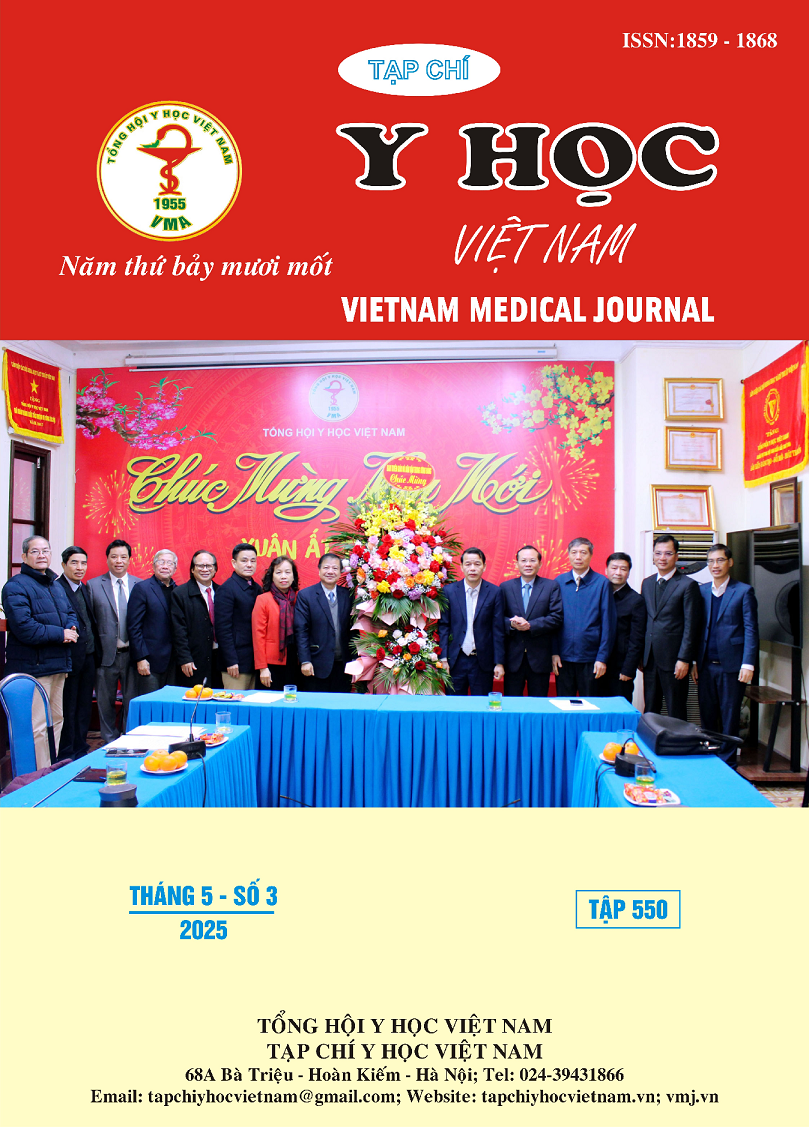EVALUATION OF MEDICAL ADVERSE EVENTS IN GASTROINTESTINAL ENDOSCOPY USING FISHBONE DIAGRAM
Main Article Content
Abstract
Objective: This study aims to describe the characteristics of medical adverse events in gastrointestinal endoscopy (GI) at the Endoscopy Center, Hanoi Medical University Hospital. Analyze the root causes using a fishbone diagram along with several related factors. Research Method: A mixed-methods cross-sectional study was conducted on 52 medical adverse events, data collected through the medical adverse events reporting system of the Endoscopy Center – Hanoi Medical University Hospital from June 2023 to February 2025. The study described the characteristics of adverse medical events and performed root cause analysis using the fishbone diagram. A group discussion was also held on several factors related to the incidents. Results: The rate of incident is 0.025%. Patients were the most affected group (69.2%). Medical adverse events occurred on all days of the week, with Monday and Friday showing the highest rates (21.2%). Medical adverse events most frequently occurred after procedures (50%) and were more common in the morning (55.8%). The procedure with the highest number of incidents was gastroscopy. Most medical adverse events have a mild level of damage, while 5.8% were classified as near misses. The root cause analysis using the fishbone diagram indicated that factors related to medical staff accounted for 67.3% of the incidents, while issues with procedures and regulations contributed 44.2%. A group discussion with five doctors and five nurses identified system-related factors, including non-standardized procedures and regulations, lack of clear assignment of responsibilities, an overly large and noisy working environment, and instability in equipment, machines, medications, and chemicals. Individual-related factors included professional qualifications and experience, stress, high patient volume, and patient preparation before the endoscopy. Conclusion: The incidence rate of medical adverse events at the Endoscopy Center is low. According to the fishbone diagram analysis, the causes of incidents are attributed to medical staff and non-standardized procedures and regulations.
Article Details
Keywords
Medical adverse events, gastrointestinal endoscopy, fishbone diagram
References
2. Kiều Quang Phát và cộng sự. Đặc điểm SCYK tại Bệnh viện đa khoa tỉnh Phú Thọ năm 2020. Tạp chí Y học Việt Nam. 2020. Số 1 (503): 133-137.
3. WHO (2017). Patient Safety - Making health care safer.
4. Wong KC. Using an Ishikawa diagram as a tool to assist memory and retrieval of relevant medical cases from the medical literature. J Med Case Rep. 2011. 29,5-120.
5. Tagaram SD, Chen C. Quality Tools and Techniques (Fishbone Diagram, Pareto Chart, Process Map). StatPearls. 2025.
6. Cotton PB, et al. A lexicon for endoscopic adverse events: Report of an ASGE workshop. Gastrointest Endosc 2010; 71: 446–454.
7. Manmeet Matharoo, et al. A prospective study of patient safety incidents in gastrointestinal endoscopy. Endosc Int Open. 2016 Nov 17;5(1): E83–E89.
8. Srivathsan Ravindran, et al. Patient safety incidents in endoscopy: a human factors analysis of nonprocedural significant harm incidents from the National Reporting and Learning System (NRLS). Endoscopy 2024; 56(02): 89-99


